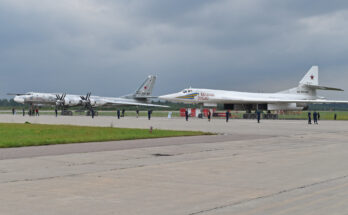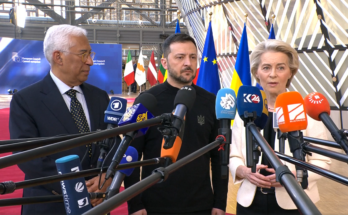By Dan Darling, Forecast International.
Changes to its fiscal balance sheet and the broader security horizon for Europe have prompted Germany to rethink its approach to defense investment going forward, with the net effect being about a 5.7 percent increase to the country’s defense budget over the coming five-year period.
As Europe slowly tries to emerge from a double-dip recession that began toward the end of 2008, the strategic landscape has also changed. The European Union countries no longer appear content with peacekeeping activities stemming from Africa’s brushfire wars. Instead, the ongoing civil conflict in Syria and the emergence of Islamic State (IS) radicals in its wake, coupled with Russia’s destabilizing activities and aggressive posture along the western fringes of its former Soviet empire, have prompted European NATO members to take stock of the security approach in Europe’s backyard.
Germany, which is just now emerging from a prolonged budget-tightening cycle, is one of several NATO countries situated in Europe that are re-examining their defense investment approaches after years of downsizing – or neglecting outright – their militaries.
The German armed forces, or Bundeswehr, were directly impacted by the 2008 global financial crisis and ensuing continent-wide recessionary fallout. An export-driven country, Germany suddenly felt the sting of Europe’s economic downturn as its own economy contracted by 4.7 percent in 2009. After attempting pump-priming stimulus measures that served primarily to grow the country’s budget deficit, the government opted to change course. After Germany’s parliament (Bundestag) passed a constitutional amendment – the Schuldenbremse, or “debt brake” – that went into effect in 2011, austerity became the favored fiscal approach in Berlin. The new debt brake clause forced the government to trim the country’s structural deficit down to 0.35 percent of GDP by 2016, after which Berlin may run budget deficits no higher than EUR10 billion and the federal and state (Lander) governments will be legally bound to stop creating additional debt.
As a result of the new amendment, the government was forced to seek budgetary savings. Naturally, defense provided one such target.
In 2010, the country’s Treasury charged the Federal Ministry of Defense with finding savings of EUR8.3 billion through 2014 as part of the government’s concentrated austerity push. The acting defense minister at the time, Thomas de Maiziere, was eventually able to get Treasury to drop much of its savings demands. Nonetheless, defense investment trended downward, and in 2014 alone the military budget fell by EUR820 million.
Meanwhile, a massive armed force restructuring – the largest such military reform effort since the Bundeswehr’s founding in 1955 – got underway in 2011, starting with the abolishment of conscription. By 2017, the aim is that the (now) fully professional force will total 185,000 personnel – down from the 250,000 at the onset of the reform process. In parallel with the troop reductions are downsized equipment holdings, ranging from fewer Eurofighter Typhoons than originally planned to smaller inventories of A400M airlifters and Tiger attack and NH90 transport helicopters, and a downsized heavy armor component. This is intended to reduce downstream costs (maintenance, support, upgrades, etc.), shrink the outstanding orders facing military equipment budgets in the “outyears,” and bring scale to a military that otherwise would be left with too few soldiers to pilot, steer, crew, maintain, and be transported upon the various platforms.
The new monies – which Chancellor Angela Merkel’s Cabinet approved on March 18 – will help plug and repair capability gaps in the Bundeswehr that have emerged as an embarrassment over the past six months. Of particular issue has been the shortfall in available transport aircraft and helicopters, many of which are suffering from spare parts limitations or are beset with technical problems. Combat aircraft and armored vehicles are experiencing these issues as well. Highlighting the problem was the deployment in September 2014 of a small German military contingent to northern Iraq to train Kurdish Peshmerga fighters, a contingent that suffered from delays due to technical problems with multiple transport aircraft.
Starting in 2016, the German defense budget will grow by EUR1.2 billion, which will increase it to about EUR34 billion overall, after which it will rise steadily to EUR35 billion by 2019. While hardly a massive defense buildup, it does represent a change in direction and attitude for a government normally disinclined to consider defense as anything beyond a tertiary concern.
Of course, in country with a deeply inured pacifist strain, scant attention placed on the Bundeswehr is hardly a political liability. But as Germany seeks to engage with NATO more broadly, scoffing at defense spending concerns at Alliance summits and ignoring capability gaps that prevent the Bundeswehr from performing adequately alongside allied forces has become a tougher stance for Berlin to assume.
For 50 years, Forecast International intelligence reports have been the aerospace and defense industry standard for accurate research, analysis, and projections. Our experienced analysts compile, evaluate, and present accurate data for decision makers. FI's market research reports offer concise analysis of individual programs and identify market opportunities. Each report includes a program overview, detailed statistics, recent developments and a competitive analysis, culminating in production forecasts spanning 10 or 15 years. Let our market intelligence reports be a key part of reducing uncertainties and mastering your specific market and its growth potential. Find out more at www.forecastinternational.com



